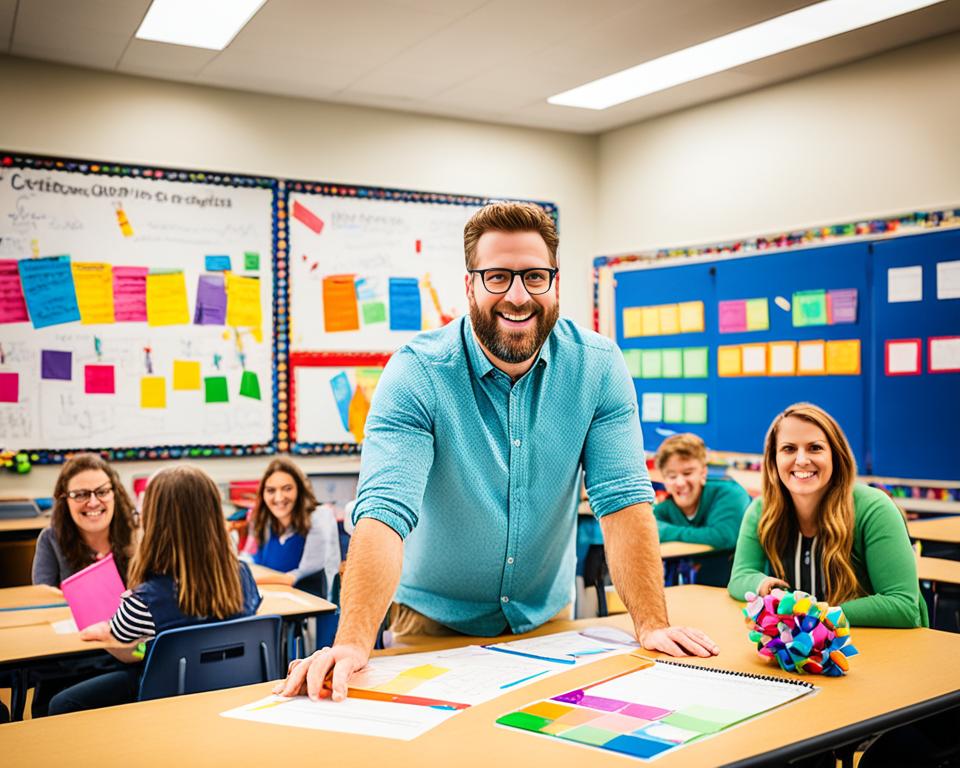As an educator, I’m always on the lookout for innovative ways to engage and inspire my students. That’s why I’m excited to share with you the transformative power of creative education programs. These cutting-edge approaches, which focus on project-based learning, STEAM education, and experiential learning, are revolutionizing the way we think about teaching and learning.
By embracing creative strategies, I’ve been able to cultivate dynamic and engaging classroom environments that unlock the full potential of my students. These innovative methods emphasize hands-on experiences, critical thinking, and problem-solving skills – precisely the kind of skills our students will need to thrive in the 21st century.
Whether it’s project-based learning, STEAM education, or experiential learning, these transformative approaches are shaping the future of education. They encourage students to actively explore, experiment, and construct their own understanding of the world around them. As an educator, I’m thrilled to witness the incredible growth and development of my students as they engage with these groundbreaking creative strategies.
Key Takeaways
- Creative education programs foster project-based learning, STEAM education, and experiential learning.
- These innovative approaches emphasize hands-on experiences, critical thinking, and problem-solving skills.
- Embracing creative strategies can create dynamic and engaging classroom environments.
- Groundbreaking creative strategies unlock the full potential of students.
- Innovative methods prepare students for the challenges of the 21st century.
Embracing the Legacy of Jerome Bruner
Jerome Bruner, a highly influential psychologist, made groundbreaking contributions to the fields of cognitive development, educational psychology, and developmental psychology. Bruner’s work has had a profound impact on the way we understand the learning process and design effective educational experiences for students.
Bruner’s Theory of Instruction: Discovery Learning
At the core of Bruner’s educational philosophy is the theory of discovery learning. This approach emphasizes the importance of actively engaging students in the exploration and experimentation of new concepts, allowing them to construct their own understanding of the subject matter. By encouraging learners to uncover principles and relationships through their own investigations, Bruner believed that students would develop a deeper, more meaningful understanding that would be retained long-term.
The Spiral Curriculum: A Unique Approach to Education
Another seminal contribution by Bruner is the Spiral Curriculum theory. This innovative approach outlines a curriculum design that revisits and builds upon previously learned concepts, gradually increasing the complexity and depth of understanding. The spiral curriculum allows students to revisit foundational ideas repeatedly, reinforcing and expanding their knowledge over time. This unique structure not only fosters deeper comprehension but also promotes the long-term retention of information.
Bruner’s Modes of Representation: Enactive, Iconic, and Symbolic
Bruner also introduced the concept of modes of representation, which describes three distinct ways in which learners construct and organize knowledge: enactive, iconic, and symbolic. Understanding these modes of representation has significant implications for classroom instruction and curriculum design, enabling educators to create more dynamic and engaging learning environments that cater to the diverse learning styles of their students.
Embracing Bruner’s work has the potential to transform the educational landscape, empowering teachers to create more effective and meaningful learning experiences for their students. By incorporating his theories and strategies, educators can foster a love of learning, promote deeper understanding, and prepare the next generation for the challenges of the 21st century.
Scaffolding Learning: The Role of Teachers
Jerome Bruner’s groundbreaking work has emphasized the crucial role that teacher guidance and scaffolding learning play in fostering cognitive development and student-centered learning. By providing the appropriate level of instructional support, educators can help learners develop a deeper understanding of the subject matter and promote the retention of information in long-term memory.
This scaffolding approach not only supports the development of procedural memory but also nurtures critical thinking and problem-solving skills. Effective implementation of scaffolding in the classroom requires teachers to carefully gauge the focus of attention and the needs of the learners, creating a learning environment that actively engages students in the educational process.
Through tailored assistance and strategic support, teachers can guide students through complex concepts, enabling them to construct their own understanding and apply their knowledge in novel situations. This dynamic interplay between teacher guidance and student-centered learning is at the heart of Bruner’s influential theories, transforming the way we approach education and unlocking the full potential of our students.
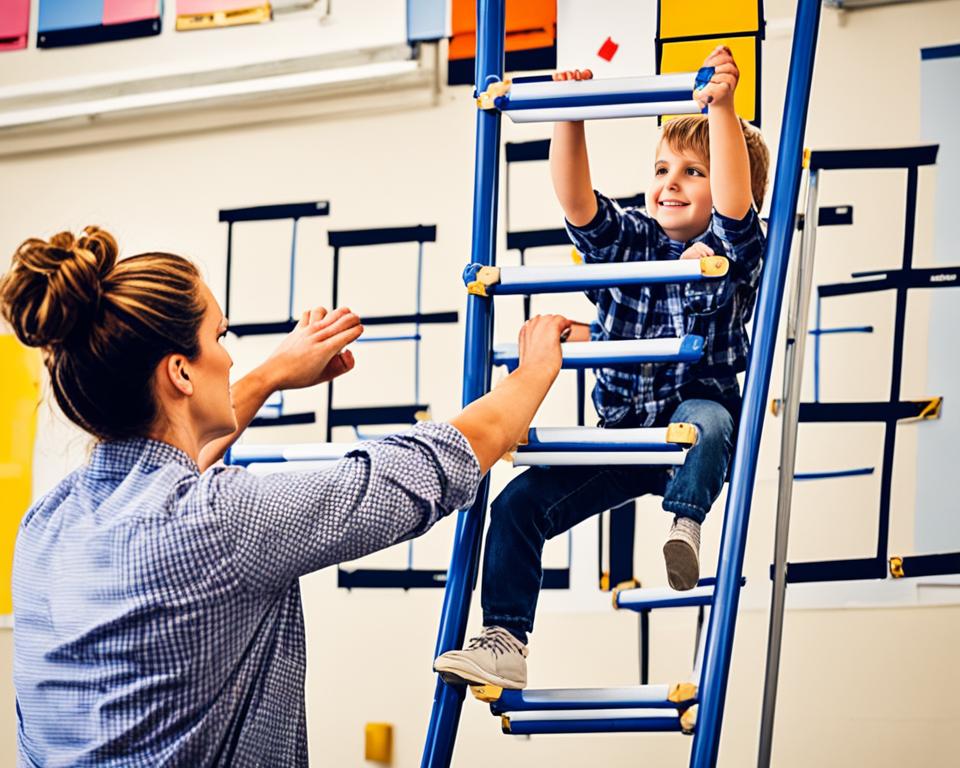
Incorporating Innovative Classroom Strategies
In addition to embracing Bruner’s educational theories, teachers can incorporate a variety of innovative classroom strategies to enhance student learning and engagement. Effective classroom management strategies, such as modeling ideal behavior, encouraging student initiative, and avoiding collective punishment, can create a positive and focused learning environment.
Classroom Management Strategies
By implementing strategic classroom management techniques, educators can foster a conducive atmosphere for active participation and student engagement. This includes setting clear expectations, providing consistent feedback, and recognizing positive behaviors to reinforce desired outcomes.
Flexible Seating
Flexible seating arrangements that allow students to move and integrate their senses can further support cognitive development and promote deeper learning. This approach encourages students to take an active role in shaping their learning environment, which can lead to increased motivation and a stronger sense of ownership over the educational process.
Webb’s Depth of Knowledge
Additionally, Webb’s Depth of Knowledge framework provides a structured approach to designing learning activities that promote different levels of thinking, from recollection and reproduction to strategic thinking and extended critical thinking. By aligning lesson plans with this framework, educators can ensure that students are engaging in a range of cognitive tasks, fostering a deeper understanding of the subject matter.
By incorporating these innovative classroom strategies, teachers can create a dynamic and engaging learning environment that empowers students to take an active role in their own learning and development.
Balancing Summative and Formative Assessments
As educators, we must strike a delicate balance between summative and formative assessments to gain a comprehensive understanding of student learning. While summative assessments, such as end-of-unit tests and final projects, provide valuable insights into overall student understanding and can serve as motivational tools, incorporating formative assessments throughout the learning process is equally crucial.
The Power of Summative Assessments
Summative assessments are instrumental in evaluating the culmination of a student’s learning journey. These high-stakes evaluations, typically administered at the end of a unit or course, offer a snapshot of the student’s mastery of the material. The data gathered from summative assessments can inform decision-making, guide curriculum development, and measure the effectiveness of teaching strategies. By leveraging the power of summative assessments, educators can ensure that students have achieved the desired learning outcomes and are prepared to progress to the next level of their educational journey.
Incorporating Formative Assessments
In contrast, formative assessments are conducted throughout the learning process, providing teachers with ongoing feedback on student progress. Techniques such as think-pair-share activities, entry and exit tickets, and self-evaluation exercises allow educators to monitor student understanding, identify areas of difficulty, and make necessary adjustments to their instruction. By incorporating formative assessments, teachers can tailor their approach to better support the individual needs of their students, fostering a deeper level of engagement and learning.
By utilizing a blend of summative and formative assessments, educators can create a more well-rounded evaluation system that supports student learning and informs their teaching strategies. This holistic approach empowers teachers to make data-driven decisions, ensure that all learners are progressing, and ultimately, help students reach their full potential.
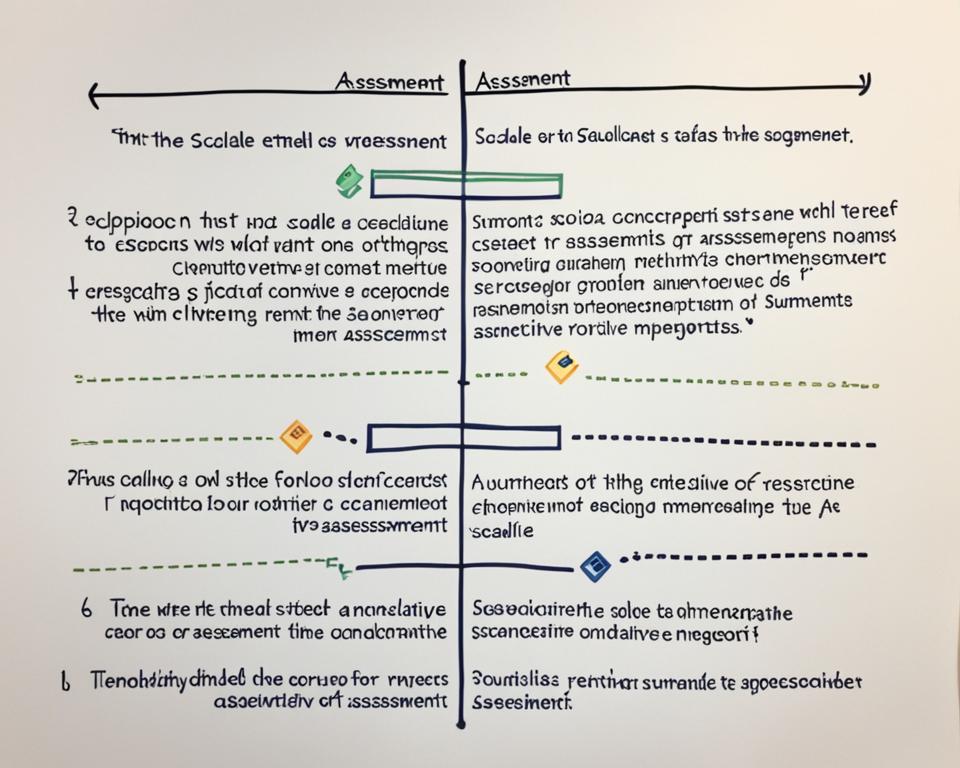
Active Learning: Putting Students at the Center
Active learning strategies are another powerful tool for transforming the classroom experience. By putting students at the center of the learning process, active learning techniques can increase student engagement and foster critical thinking.
Reciprocal Questioning
Reciprocal questioning encourages learners to generate their own questions based on recent lessons, promoting deeper understanding and knowledge retention. This interactive approach empowers students to take an active role in their learning, moving beyond passive absorption of information.
The Pause Procedure
The pause procedure allows students to take breaks for discussion, problem-solving, and reflection, enhancing their ability to process and apply new information. By incorporating these strategic pauses, teachers create opportunities for active engagement, fostering critical thinking and knowledge synthesis.
Muddiest Point
The muddiest point activity prompts students to identify the least clear aspects of the lesson, enabling teachers to address misconceptions and provide targeted support. This feedback loop ensures that the learning process remains student-centered, with educators constantly adapting their approach to meet the evolving needs of the class.
Incorporating active learning strategies can create a dynamic and engaging classroom environment that empowers students to take an active role in their own learning. By shifting the focus from passive reception to active participation, educators can cultivate a love of discovery and a deeper understanding of the subject matter.
Differentiated Instruction: Catering to Diverse Learners
Recognizing the diverse learning styles and needs of students is crucial for creating an inclusive and effective classroom environment. Differentiated instruction, as advocated by renowned educational theorist Carol Ann Tomlinson, involves adapting content, processes, and learning experiences to cater to the unique abilities and preferences of each student. This student-centered approach may involve implementing strategies like learning stations, think-pair-share methods, and other personalized learning experiences.
By constantly reflecting on the match between their teaching practices and the learning needs of their students, educators can ensure that all learners have the opportunity to thrive and reach their full potential. This commitment to addressing the diverse needs of diverse learners is essential for fostering a classroom culture that empowers every student to succeed.

Personalized Learning: Tailoring Experiences
Closely related to differentiated instruction, personalized learning takes the concept of tailoring educational experiences a step further. By leveraging technology and adaptive learning strategies, personalized learning allows students to progress at their own pace and engage with content in ways that align with their unique strengths, interests, and learning styles. This student-centric approach not only improves academic outcomes but also fosters a sense of ownership and investment in the learning process.
Through personalized learning, educators can create a classroom environment that empowers students to take an active role in their education, ultimately preparing them for a lifetime of self-directed learning and growth. By harnessing the power of individualized instruction and adaptive learning, teachers can ensure that each student receives the support and guidance they need to thrive, regardless of their starting point or learning preferences.
| Personalized Learning Strategies | Benefits |
|---|---|
| Adaptive Learning Algorithms | Tailored content and pacing based on student performance |
| Student-Driven Playlists | Allows learners to explore topics and content at their own pace |
| Real-Time Performance Tracking | Enables teachers to provide timely, targeted support and interventions |
| Multimedia Learning Resources | Caters to diverse learning preferences and supports technology integration |
By embracing the principles of personalized learning, educators can create a dynamic and engaging classroom environment that empowers students to take ownership of their educational journey, ultimately preparing them for a future of continuous learning and growth.
Universal Design for Learning: Equal Access to Education
Universal Design for Learning (UDL) is an educational framework that ensures all students, regardless of their abilities or backgrounds, have equal access to education. By providing flexible ways for students to learn, engage, and demonstrate their understanding, UDL aims to create an inclusive classroom environment that caters to the diverse needs of the learners.
Some key UDL strategies include knowing the strengths and weaknesses of students, providing flexible classroom setups, and adapting information for multilingual learners. This approach empowers educators to create learning experiences that cater to the unique needs of each student, enabling them to succeed and reach their full potential.
| UDL Principle | Description | Example Strategies |
|---|---|---|
| Multiple Means of Representation | Providing information in a variety of formats to accommodate diverse learning styles |
|
| Multiple Means of Action and Expression | Allowing students to demonstrate their understanding in multiple ways |
|
| Multiple Means of Engagement | Fostering student motivation and active participation |
|
By embracing the principles of Universal Design for Learning, educators can create a dynamic and inclusive classroom environment that empowers all students to succeed and reach their full potential.
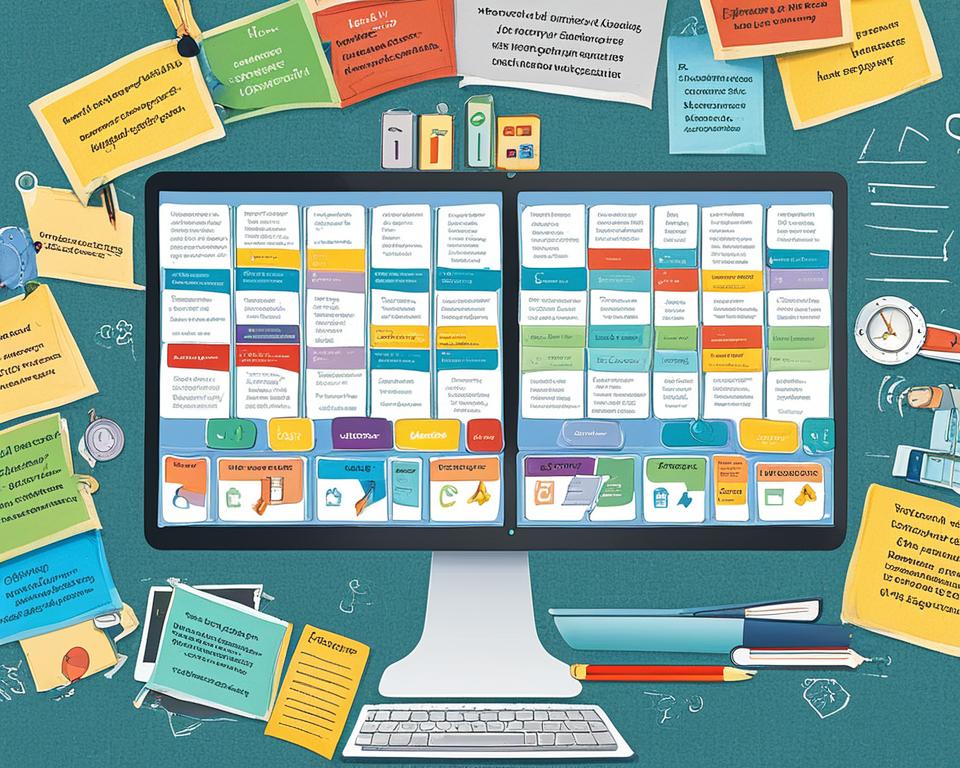
Response to Intervention: Early and Continuous Support
Response to Intervention (RTI) is a proactive approach to addressing learning or behavioral challenges in students. By focusing on early and continuous identification, assessment, and targeted assistance, RTI aims to provide the necessary support before problems escalate. This framework involves a multi-tiered system of interventions, starting with everyday teaching practices and moving towards more specialized, individualized learning plans as needed.
The key to successful RTI implementation is the ability to quickly identify and address trouble spots, allowing educators to develop tailored learning plans that address the unique needs of each student. By incorporating RTI strategies into their classroom management plan, teachers can ensure that all learners receive the support they need to thrive.
| RTI Intervention Tiers | Characteristics | Outcomes |
|---|---|---|
| Tier 1: Core Instruction | High-quality, evidence-based teaching practices for all students | Addresses the learning needs of 80-90% of students |
| Tier 2: Targeted Intervention | Supplemental, small-group instruction for students who need additional support | Helps 5-10% of students who are struggling to meet grade-level expectations |
| Tier 3: Intensive Intervention | Highly customized, individual instruction for students with significant learning or behavioral needs | Supports 1-5% of students who require the most intensive, specialized interventions |
By incorporating proactive strategies and early intervention through the RTI framework, educators can ensure that all students receive the targeted support they need to succeed, regardless of their individual learning profiles or challenges.
Creative Education Programs: Integrating Technology
Integrating technology into creative education programs can further enhance the learning experience for students. Virtual field trips, for example, allow learners to explore famous landmarks, natural phenomena, and diverse cultural experiences from the comfort of the classroom, expanding their horizons and deepening their understanding of the world around them.
Virtual Field Trips
Through virtual field trips, students can embark on immersive journeys to iconic destinations, observe natural wonders, and immerse themselves in different cultural settings. This technology-enabled approach broadens the scope of learning, providing opportunities for experiential education that would otherwise be limited by geographic constraints or logistical challenges.
Video Mini-Lessons
Incorporating video mini-lessons into the curriculum can provide engaging, visually-rich content that complements traditional teaching methods. These bite-sized, multimedia-based lessons can effectively convey complex concepts, demonstrate practical skills, and capture the attention of today’s tech-savvy students. By strategically leveraging technology, educators can create a dynamic and immersive learning environment that captures students’ attention, sparks their curiosity, and prepares them for the digital landscape of the 21st century.
Fostering Breakthrough Strategies in Education
To truly transform teaching and learning, educators must embrace a spirit of strategic innovation, drawing inspiration from diverse fields and challenging conventional wisdom. Breakthrough strategies in education can be fostered through four key approaches:
Contrast: Challenging Assumptions
By challenging assumptions and questioning the status quo, educators can uncover new and innovative ways to approach teaching and learning. This creative thinking process encourages students to think outside the box, leading to breakthrough strategies that can revolutionize the classroom experience.
Combination: Connecting Ideas
Effective educators often find inspiration by connecting ideas from seemingly unrelated fields, creating unique and unexpected solutions. This combination of diverse perspectives can result in groundbreaking strategies that address the evolving needs of 21st-century learners.
Constraint: Transforming Limitations
Embracing constraints can paradoxically fuel creative thinking and lead to innovative breakthroughs. By reframing limitations as opportunities, educators can develop strategies that transform challenges into dynamic learning experiences for their students.
Context: Drawing Inspiration from Different Domains
Looking beyond the traditional boundaries of education and drawing inspiration from different domains, such as business strategy and design thinking, can yield breakthrough strategies that enhance the overall educational experience. This contextual approach encourages interdisciplinary collaboration and fosters a culture of strategic innovation in the classroom.
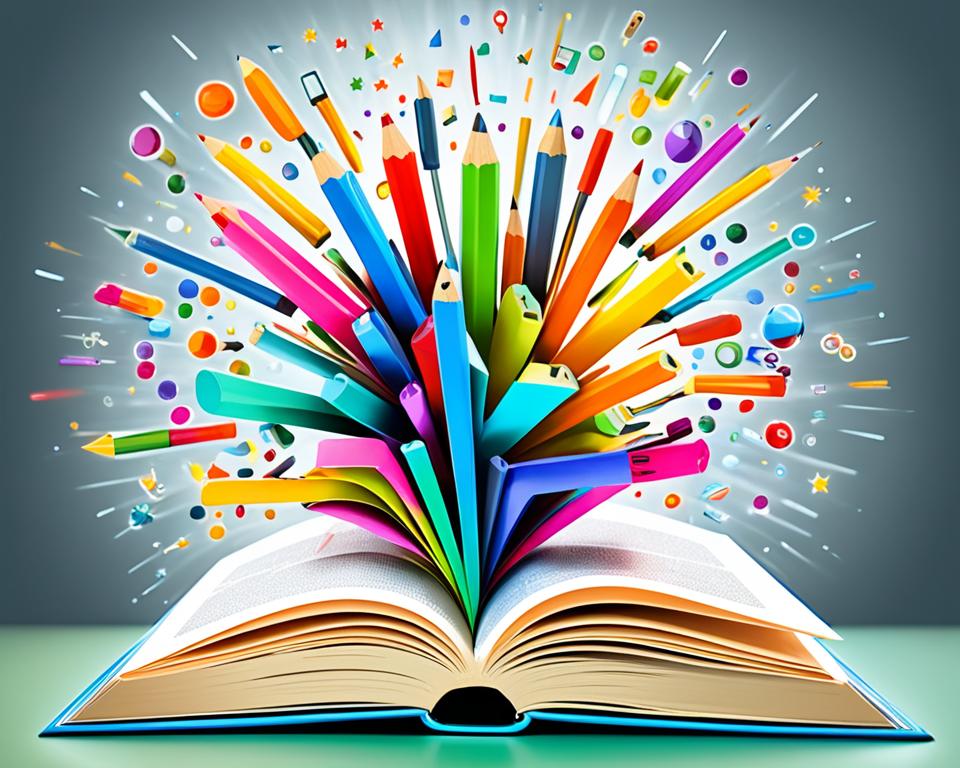
Conclusion
In conclusion, transforming your teaching approach with groundbreaking creative education strategies can have a profound impact on student learning and engagement. By embracing the legacy of pioneers like Jerome Bruner and incorporating innovative teaching strategies, educators can create dynamic and inclusive learning environments that cater to the diverse needs of their students. From leveraging technology integration to fostering educational innovation, the key lies in constantly challenging assumptions, making unexpected connections, and drawing inspiration from a variety of contexts.
By empowering students to take an active role in their own student-centered learning, educators can prepare the next generation for a future filled with curiosity, critical thinking, and a lifelong love of discovery. Through the implementation of personalized learning techniques and a commitment to strategic innovation, we can transform the educational landscape, ensuring that every student has the opportunity to reach their full potential.
As we continue to explore the boundless potential of creative education, let us remain steadfast in our pursuit of excellence, ever-vigilant in our quest to unlock the transformative power of teaching and learning. Together, we can shape a future where the joy of discovery and the thrill of intellectual growth are the hallmarks of a truly transformative educational experience.
FAQ
What are some groundbreaking creative education programs that foster project-based learning, STEAM education, and experiential learning?
How did Jerome Bruner’s work contribute to the fields of cognitive development, educational psychology, and developmental psychology?
What is the importance of scaffolding learning in the classroom?
What are some innovative classroom strategies that can enhance student learning?
How can educators balance the use of summative and formative assessments?
What are the benefits of incorporating active learning strategies in the classroom?
How does differentiated instruction cater to the diverse learning styles and needs of students?
What is personalized learning, and how does it empower students?
How does Universal Design for Learning (UDL) promote inclusive and accessible education?
What is Response to Intervention (RTI), and how can it address learning or behavioral challenges in students?
How can integrating technology into creative education programs enhance the learning experience for students?
What are the key approaches to fostering breakthrough strategies in education?
Source Links
- https://www.structural-learning.com/post/jerome-bruners-theories
- https://www.prodigygame.com/main-en/blog/teaching-strategies/
- https://hbr.org/2019/03/strategy-needs-creativity
